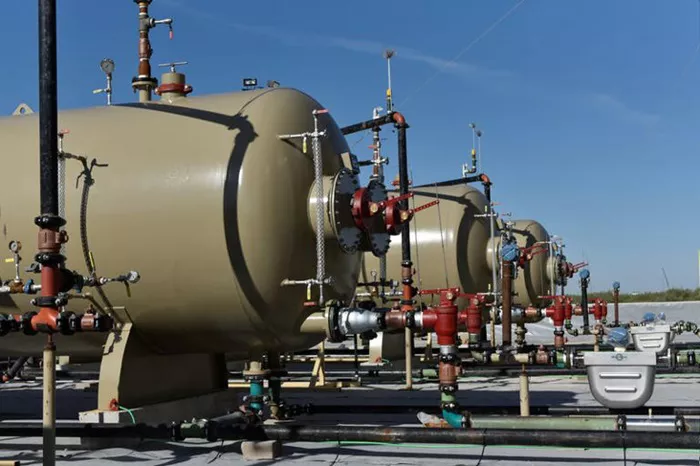Crude oil is a complex mixture of hydrocarbons and other compounds that must be separated into its various components for refining and utilization. This separation process is essential for producing valuable products like gasoline, diesel, and jet fuel. The separation of crude oil involves several key steps and techniques, each designed to isolate specific fractions and compounds. Here’s a comprehensive overview of the processes involved.
1. Initial Processing: Desalting and Stabilization
Desalting
The first step in preparing crude oil for separation is desalting. Crude oil often contains salts and other impurities that can cause problems in refining. Desalting involves mixing the crude oil with water to dissolve these salts. The water, now containing dissolved salts, is then separated from the oil. This process prevents potential damage to equipment and ensures smoother downstream processing.
Stabilization
After desalting, crude oil undergoes stabilization. This process reduces the pressure and temperature of the crude oil to remove lighter hydrocarbons such as methane and ethane. Stabilization helps to make the crude oil more manageable and prevents issues related to the volatility of these lighter compounds.
2. Primary Separation: Atmospheric Distillation
The primary method for separating crude oil into its basic components is atmospheric distillation. In this process, the crude oil is heated in a distillation column. As the oil heats up, it vaporizes and rises through the column. Different hydrocarbons have different boiling points, so they condense at different levels within the column.
Heavy Residues: At the bottom of the distillation column, the heaviest components, including residues and bitumen, are collected.
Naphtha: Intermediate fractions, such as gasoline and naphtha, are collected at various points along the column.
Kerosene: Components like jet fuel and other middle distillates are separated at higher levels.
Light Ends: The lightest fractions, including gases like propane and butane, are collected at the top.
See also: What Does 1 Barrel Of Crude Oil Produce?
3. Secondary Separation: Vacuum Distillation
To further process the heavier fractions that remain after atmospheric distillation, vacuum distillation is employed. This method operates under reduced pressure, which lowers the boiling points of the heavier fractions, allowing them to be separated at lower temperatures. This technique effectively isolates heavier components such as vacuum gas oil and residual oils that are not efficiently separated during atmospheric distillation.
4. Advanced Separation Techniques
Catalytic Cracking
Catalytic cracking is used to break down heavier hydrocarbons into lighter, more valuable products. In this process, a catalyst facilitates the breaking of large hydrocarbon molecules into smaller ones. This method is crucial for producing gasoline and diesel from heavier fractions.
Hydrocracking
Hydrocracking combines hydrogen with a catalyst to convert heavy hydrocarbons into lighter, high-quality products. This process operates at high pressure and temperature and is used to produce high-quality diesel and jet fuel. The addition of hydrogen helps to remove impurities and improve the quality of the final products.
Alkylation
Alkylation is used to produce high-octane gasoline by combining smaller molecules, such as isobutane and olefins, in the presence of a catalyst. This process generates alkylate, a valuable component for high-performance gasoline.
Isomerization
Isomerization involves rearranging the molecular structure of hydrocarbons to improve the octane rating of gasoline. This process converts straight-chain hydrocarbons into branched-chain hydrocarbons, enhancing fuel performance.
5. Additional Separation Techniques
Solvent Extraction
Solvent extraction involves using a solvent to selectively dissolve and remove specific components from crude oil. This technique is often used to remove sulfur compounds and other impurities from lighter fractions.
Adsorption
Adsorption uses adsorbent materials to selectively remove specific components from crude oil. This method is effective for removing contaminants like sulfur and nitrogen compounds, improving the quality of the oil.
Membrane Separation
Membrane separation employs selective permeable membranes to separate components based on their size or chemical properties. This technique is increasingly used for separating gases and small molecules.
6. Environmental Considerations and Challenges
Waste Management
The separation and refining processes generate by-products and waste materials, including spent catalysts, residues, and wastewater. Proper management and disposal of these wastes are essential to minimize environmental impact and comply with regulations.
Energy Consumption
The separation processes are energy-intensive, requiring significant amounts of heat and pressure. Efforts to improve energy efficiency and reduce greenhouse gas emissions are ongoing in the industry to address these challenges.
Technological Advancements
Continuous advancements in technology enhance the efficiency and effectiveness of separation processes. Innovations in catalysts, separation techniques, and process integration contribute to better product quality and reduced environmental impact.
Conclusion
The separation of crude oil is a multi-step process involving various techniques to isolate different components and produce valuable products. From initial desalting and stabilization to advanced methods like catalytic cracking and hydrocracking, each step plays a crucial role in refining crude oil into usable materials. Understanding these processes is essential for optimizing oil production, improving product quality, and addressing environmental and economic challenges in the petroleum industry.
Related Topics:

